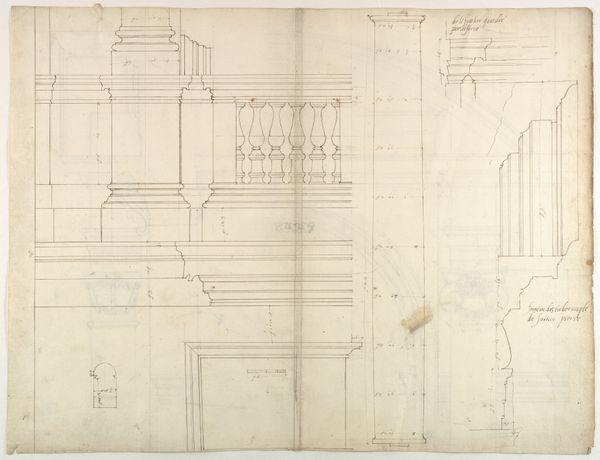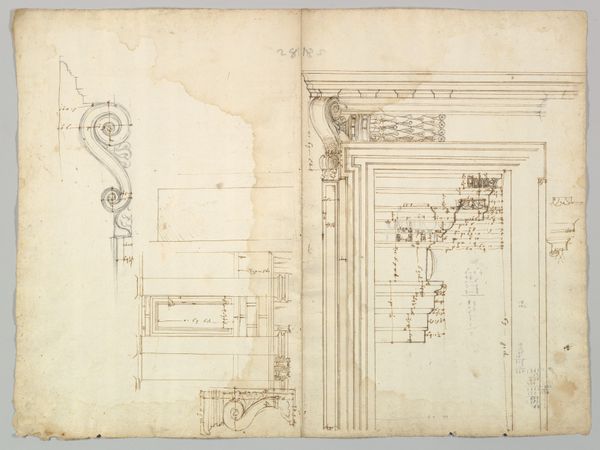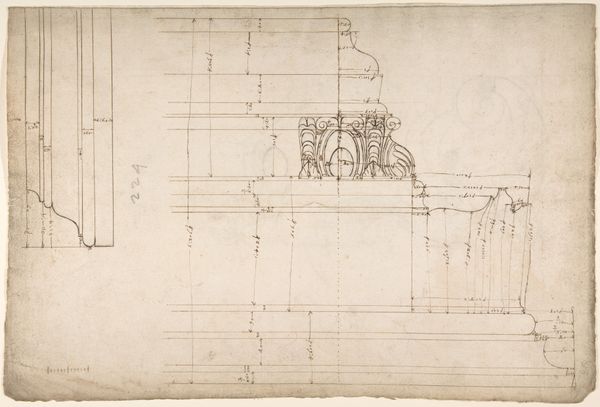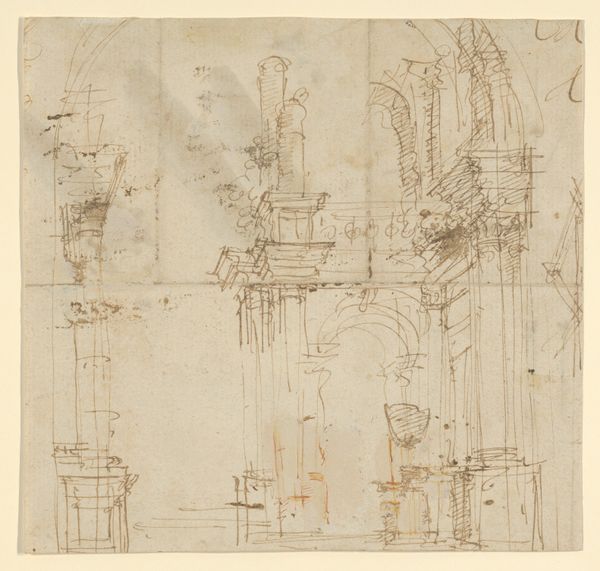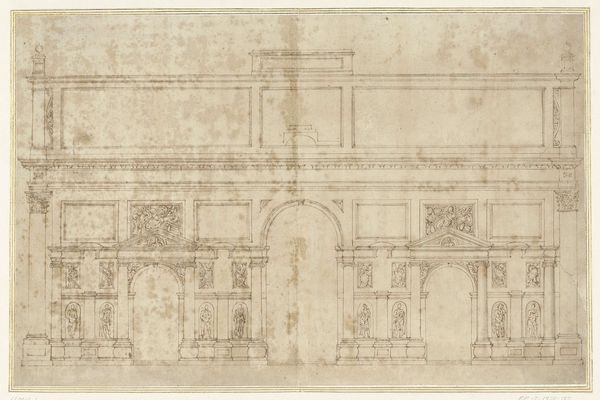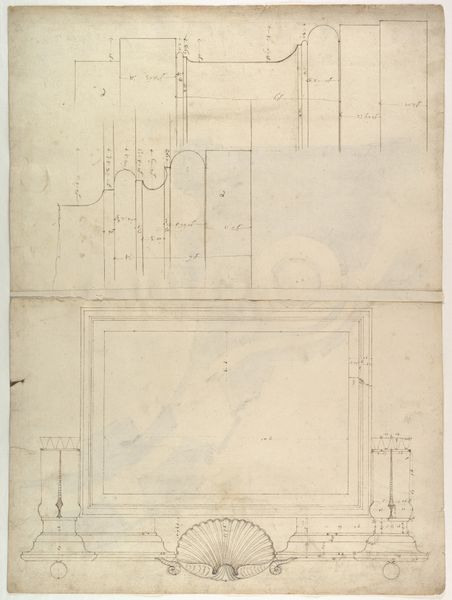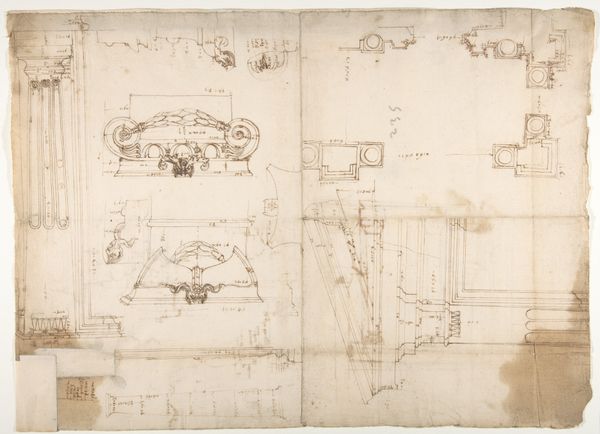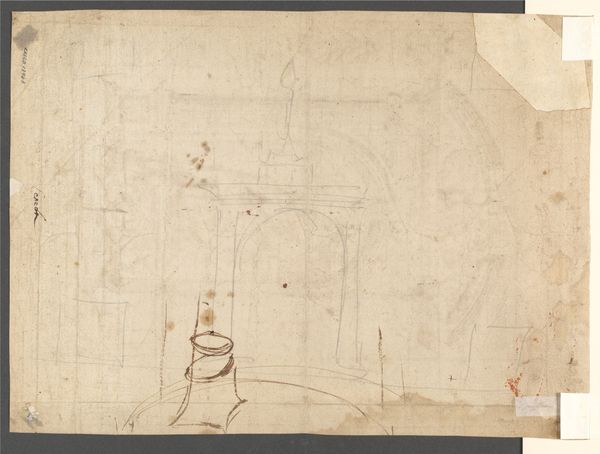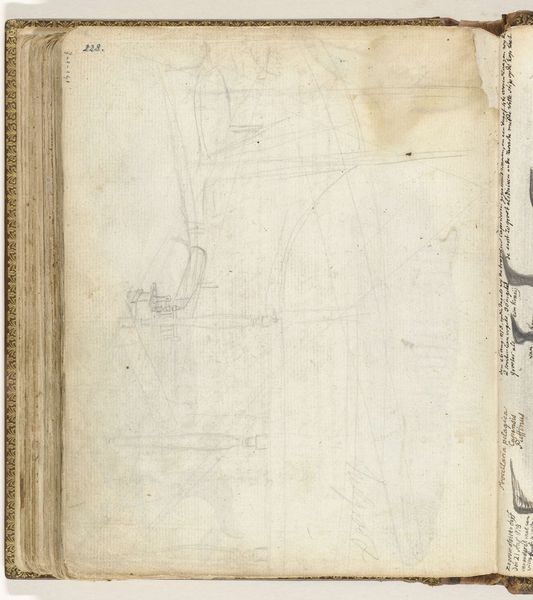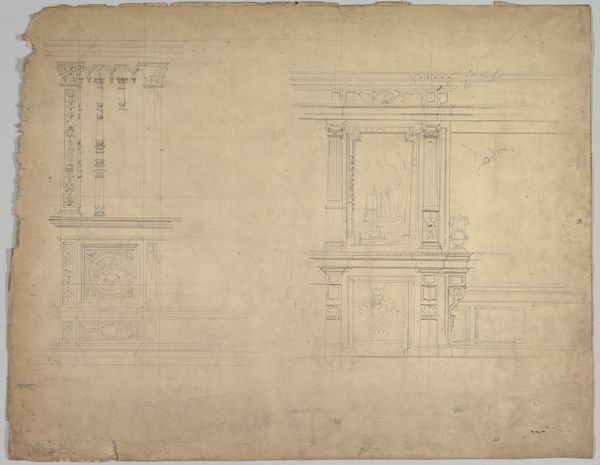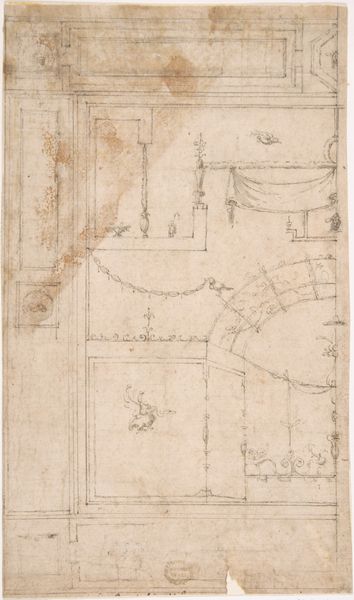
Study for a Colonnade in Perspective 1525 - 1535
0:00
0:00
drawing, paper, pen, architecture
#
drawing
#
perspective
#
paper
#
11_renaissance
#
geometric
#
line
#
pen
#
italian-renaissance
#
architecture
Dimensions: 21 1/4 x 19 3/8 in. (54 (irregular) x 49.2 cm); additional right margin, 5.5 cm
Copyright: Public Domain
Editor: This drawing, "Study for a Colonnade in Perspective" by Baldassare Peruzzi, dates to between 1525 and 1535. It's rendered in pen on paper, and you can see these faint grid lines underneath, which I find pretty cool! What strikes me is how it highlights the labor and precision involved in architectural planning during the Renaissance. What's your take on this, considering the materials and methods? Curator: Exactly! Look closely. The materiality speaks volumes about the Renaissance workshop. We see the economics of paper production, the relative inexpensiveness of pen and ink facilitating this preparatory study. But more importantly, the drawing is not just about aesthetics; it is a utilitarian object intended as a tool of production. How does seeing it this way change your understanding of its value? Editor: That’s a really interesting point. I guess I hadn’t considered its function beyond its visual appeal. Knowing that this was a working document really shifts the focus away from simply admiring it as a beautiful drawing. Curator: And it challenges the concept of artistic genius. This drawing is a record of intellectual labor, a visualization of mathematical principles applied to architectural design. It suggests the commodification of architectural skills; Peruzzi would have sold this service. What might someone be purchasing with such a drawing? Editor: They’re buying the potential, the idea that can then be realized with physical material and, of course, manual labor to build the structure! So, it makes me rethink how architecture depends on available resources and the socioeconomic context shaping that production. Curator: Precisely! Understanding the drawing through its materials and intended purpose gives us insights into Renaissance culture, its values, and its means of production. It allows us to appreciate art beyond mere aesthetics. Editor: Absolutely. I’m seeing now that this simple drawing opens a door into understanding not only art but the society that created it.
Comments
No comments
Be the first to comment and join the conversation on the ultimate creative platform.
